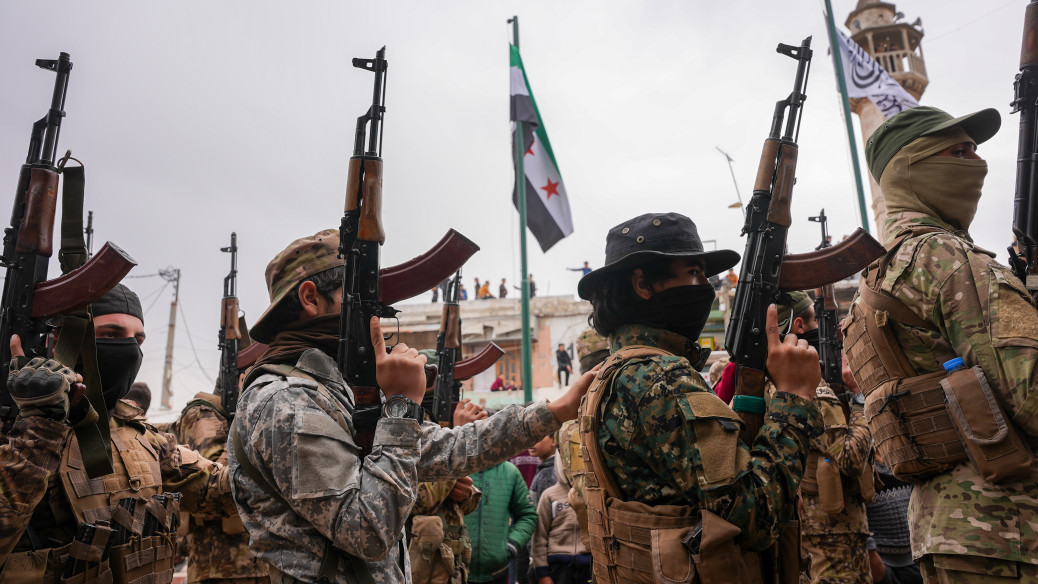As Syria cautiously navigates a transitional phase within a volatile political and military landscape, the challenge of rebuilding the national army emerges as one of the most delicate and decisive tasks ahead. According to former Syrian officer and military affairs researcher Rashid Horani, the issue extends far beyond disarmament or structural reform—it strikes at the heart of Syria’s post-war identity.
Horani told 963+ that the future Syrian army must embody a renewed national identity—one capable of transcending the entrenched divisions of sect, region, and factionalism that have fractured the country for over a decade. The stakes, he argued, are profound: the formation of a truly national army is not merely a military objective, but a foundational test of Syria’s political and social cohesion.
Toward a Unified Military Framework
Despite the complexity of the task, Horani believes the creation of an inclusive national army is not only achievable—it has already begun. He pointed to recent steps including the incorporation of revolutionary factions from northern Syria, local militias in Suweida, and even some Kurdish groups into a broader military structure. While sectarian and regional divisions persist, Horani maintained that they no longer dominate the landscape as they once did.
He outlined a two-track approach to integration. The first is organisational: consolidating smaller factions into larger formations—for instance, transforming individual groups into brigades within centralised divisions. This structure, he said, helps dissolve factional command and promotes unified military decision-making.
The second track is ideological. Horani stressed the importance of national awareness programmes aimed at cultivating a shared Syrian identity among recruits, distancing them from sectarian, regional, or ideological allegiances.
Overcoming Islamist Legacies
On the challenge posed by Islamist influences within some existing factions, Horani acknowledged the issue but insisted it must be confronted directly. He revealed that the Ministry of Defence has launched national guidance initiatives designed to instil inclusive military values. These efforts include revised ideological curricula, updated codes of conduct, and enhanced internal oversight.
A military inspectorate, he added, has been activated across units to enforce institutional norms and curtail the lingering effects of narrow religious or ideological agendas.
Meeting International Standards
Reforming Syria’s armed forces to align with international standards, Horani argued, is a gradual but active process. He cited growing interest from key international actors—including the United States, United Kingdom, Turkey, and Saudi Arabia—in supporting training and equipping programmes, which he interpreted as a sign of recognition for the seriousness of the reform effort.
On the ground, the Ministry of Defence has begun restructuring units to reflect internationally recognised models, including the establishment of clear command hierarchies, specialised combat and support units, and a focus on ongoing professional training. Horani referenced a recent statement by Defence Minister Major General Murhaf Abu Qasra reaffirming the ministry’s commitment to these reforms.
The Challenge of Integrating the SDF
On the particularly sensitive issue of integrating the Syrian Democratic Forces (SDF), Horani acknowledged the political and ethnic complexities involved. He said the government is treading carefully to avoid reigniting Arab–Kurdish tensions.
He confirmed the opening of both direct and indirect communication channels with SDF leadership. These overtures include political gestures, such as meetings with international officials, and practical steps, including the easing of specific sanctions.
Horani noted that the March agreement between Damascus and the SDF stipulates full integration of SDF personnel into the national army, without the creation of separate Kurdish units. Some SDF commanders, he added, will assume leadership roles within the broader military framework—mirroring arrangements with leaders from other regions—to avoid the development of parallel command structures.
The Suweida Exception
Regarding local militias in Suweida, Horani said integration efforts are already in motion. Groups led by figures such as Suleiman Abdul Baqi and Laith al-Balous have begun aligning with state institutions, with the General Security Directorate reportedly recruiting over 600 young men from the province.
Other factions remain reluctant, notably that aligned with Sheikh Hikmat al-Hijri, who continues to resist full integration. However, Horani noted that the government has avoided direct confrontation, opting instead for a strategy of gradually expanding state presence and institutional reach. Al-Hijri’s occasional public remarks, he suggested, are more about preserving influence than challenging the state outright.
Foreign Fighters: A Pragmatic Approach
On the contentious topic of integrating foreign fighters, Horani advocated a pragmatic stance. He emphasised that only a small number remain, many of whom have integrated into local communities through marriage or transition to civilian life before the regime’s collapse.
If integration is to be considered, he said, it should be governed by international agreements stipulating clear conditions for residence and military service. Any such individuals must agree to abide by the legal and institutional standards of the Syrian army. Provided they pose no threat to the national project, Horani argued, they can be addressed as part of a transitional file.
A National Project, Not Just Military Reform
In closing, Horani emphasised that rebuilding Syria’s army is not simply an administrative or tactical endeavour—it is a national project that demands a complete cultural and institutional transformation. Success, he said, would deliver Syria its first truly sovereign instrument of power. Failure would risk perpetuating old divisions under a new name.
This article was translated and edited by The Syrian Observer. The Syrian Observer has not verified the content of this story. Responsibility for the information and views set out in this article lies entirely with the author.


